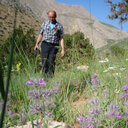Comparison of Polyphenol Profile and Antimutagenic and Antioxidant Activities in Two Species Used as Source of Solidaginis herba - Goldenrod.
Keywords
Abstract
European Pharmacopoeia accepts two equivalent species Solidago canadensis L. and S. gigantea Aiton as goldenrod (Solidaginis herba). We compared phytochemical profile of both species from invasive populations in Poland. Further, we compared in vitro antimutagenic and antioxidant activities of solvent extracts from aerial (AP) and underground parts (UP). In S. gigantea, flavonoid profile was dominated by quercetin glycosides, with quercitrin as the major compound. In S. canadensis, quercetin and kaempferol rutinosides were two major constituents. Caffeoylquinic acids (CQAs) were less diverse with 5-CQA as a main compound. In UP, over 20 putative diterpenoids were detected, mostly unidentified. Several CQAs were present in higher amounts than in AP. Antioxidant and antimutagenic activities were different between species and organs, with the strongest inhibition of lipid peroxidation by Et2 O and AcOEt fractions from AP of both species (IC50 13.33 - 16.89 μg/mL) and BuOH fraction from S. gigantea UP (IC50 = 13.32 μg/mL). Chemical mutagenesis was completely inhibited by non-polar fractions, but oxidative mutagenesis was inhibited up to 35% only by S. canadensis. No clear relationship was found between chemical profiles and antimutagenic activity. In conclusion, both species have diverse activity and their phytochemical profiles should be considered in quality evaluation. UP of these weeds can also provide potential chemopreventive substances for further studies.


